The Great Screen Impressionists, Part One: The Comedians

Imitations are easy. We all have a friend who can do a passable Christopher Walken, and that other friend who thinks he can and really shouldn’t. Imitation is as simple as a facial expression, a voice tic, a funny walk. I myself can do an excellent imitation of a puffer fish, given enough time and fattening food. Impression, however, is very different. A great impression need not come from an intense physical similarity, it comes from an innate knowledge of just who you are imitating. The great impressionists can stay in character for hours, not merely minutes. They don’t do it for a punch line, they are in for the long haul.

Unsurprisingly, those who are able to become another person for the purposes of silver screen drama are often rewarded handsomely for their troubles. Very few years go by without a historical drama nominated for Oscars (Usually with Colin Firth, usually British, usually long). Blanchett, Mirren, Streep: these are all actors who have come to great critical and popular acclaim for their impressions of politicians, royals and controversial historical figures. These accolades come for good reasons too; these performers embody real characters and their troubled lives in such a way as to invite both sympathy and historical inquiry. I hope to explore this process in a further article, but what I am truly interested in here are those who receive little long-term remembrance: the comedians.
So, here we come to the point of the article: what makes a good comedic impression? They are often very of-the-moment. A well-known celebrity makes a gaffe or otherwise comes to the attention of entertainers, and the next few days are filled with impressions. These have all of the hallmarks of a tea light candle: bright, pretty, but with little long-lasting effect. However, some comedians transcend these borders, with impressions that outlast even those whom they are based on. These slowburn comedic impressions have power that is often misunderstood. They do not win Oscars, but they can often expose hard truths about our people and our society in such a way as to make us think, rather than make us angry. Lampooning politicians, for example, gives the audience power through humanisation, showing that these people are not all powerful and untouchable. Australians in particular are fond of this, look up The Chaser, Full Frontal or Rove for examples of how we treat our leaders (here’s a hint: it’s not kind). Although, not all impressions are crafted with such lofty motives, others are produced only with the intention to entertain, which I argue is one of the more noble intentions one can have.
The list below comprises of three of the most influential or otherwise important impressions in recent memory (plus a bonus item at the end), and why they matter, what lessons they teach about what makes a good impression. Each represents a different aspect of the impression, some being dead on target in terms of physicality and personality, with others being a more abstract take. The list is not about best or worst, as when you deal with comedy these terms become meaningless. Rather it is about showcasing the importance of comedic impression, and why certain takes last longer than others.
A note before beginning: all of my examples originate from the home of impression, Saturday Night Live. This is not intentional, rather it just happens that the majority of universally famous celebrity and political impressions come from this program. I mentioned Australian programmes above that have dead on impressions, and I know for a fact that the Brits have deadpan down to a fine art, so there is no dearth of examples from other nations and television programmes. These are a select few that showcase different elements of what makes an excellent impression that I believe will resonate with the large variety of readers we have here at The Artifice.
Be Funny, Witty, But Also Kind: Will Ferrell as George W. Bush
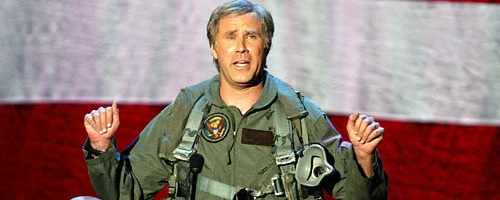
This is an example of how someone with almost no physical resemblance to a person can do a long-lasting impression simply based on personality alone. Without delving into the unending Pit of Despair that is political allegiance, I feel I can say freely that Bush Jr. was a gift to comedians. Jokes are easy, regardless of his actual intelligence, the former President did make several very public gaffes. I don’t say this to be cruel, I say it to highlight how easy it would be to put on a slightly Southern accent and an upside down children’s book and call it a day on the impression. Will Ferrell, however, is not a man to do anything halfway.
 With humble beginnings on Saturday Night Live during the 2000 presidential campaign, Ferrell’s impression has garnered such popularity as to spawn his own critically acclaimed one-man Broadway show: You’re Welcome, America. Transcending all of the one-note impressions that came before, Ferrell’s has lasted more than 13 years. To give that number context, his impression is a teenager, whereas most have the life expectancy of a plague baby in the Middle Ages.
With humble beginnings on Saturday Night Live during the 2000 presidential campaign, Ferrell’s impression has garnered such popularity as to spawn his own critically acclaimed one-man Broadway show: You’re Welcome, America. Transcending all of the one-note impressions that came before, Ferrell’s has lasted more than 13 years. To give that number context, his impression is a teenager, whereas most have the life expectancy of a plague baby in the Middle Ages.
Ferrell’s Bush wasn’t an uncultured idiot, like many others of the era. The reason why those inferior imitations never became famous is, in my opinion, twofold. First, there is a line between exaggeration and outright ridiculousness. If there is no believability in the impression, audiences will not respond (see the next section for elaboration). Second, mean spirited impressions of political figures (apart from truly evil dictators) rarely gain traction because cruelty isn’t funny. Ferrell’s Bush was a little short-sighted, charmingly naïve and extremely childlike. These are all traits that Bush himself exhibited, but merely put under a microscope for comedic effect.
Ferrell’s impression shows how controversial figures can be imitated and lampooned without savagery and mean spirit, while still staying true to the intricacies of the character. In addition, we can see just how influential and long-lasting a truly spot-on impression can be, given the right platform and actor.
Always Have a Kernel of Truth: Darrell Hammond as Sean Connery
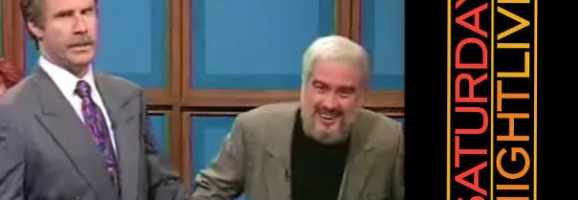
This, my friends, is an example of how an impression can go so far down the road to ridiculous that it actually loops back and becomes valid once more. Hammond’s Connery exists for one reason and one reason alone: to torment and torture Will Ferrell’s hapless Alex Trebek on Celebrity Jeopardy! This long running sketch on Saturday Night Live (where else?) has the same formula each time, and yet it always turns out unique and hilarious. Trebek (Ferrell) attempts to control two unintelligent, uninterested or otherwise unengaged celebrity contestants, all the while being subjected to one liners from Connery (Hammond), normally about the (lack of) virtue of Trebek’s ailing mother. The categories are painfully easy (my favourite being “Colours That End in ‘Urple'”) and it is the responses by the “celebrities” that make for the humour of the segment.
 Hammond’s impersonation is exaggerated, ridiculous and outlandish (see him purposefully mistake ‘An Album Cover’ for ‘Anal Bum Cover’) and yet it somehow still feels like Connery. Perhaps it is the hint of the charlatan, the womaniser, along with a dirty sense of humour that evokes 1960s era Bond that legitimises the impression, but whatever it is, it makes for riveting viewing. In a recurring sketch that is filled with impressive imitations (Norm McDonald as Burt Reynolds is a notable example), Hammond always comes out on top, supported with aplomb by Ferrell’s deadpan straight man. Indeed, perhaps it is Ferrell who should be lauded here, as he manages to keep a straight face throughout Hammond’s impeccable delivery.
Hammond’s impersonation is exaggerated, ridiculous and outlandish (see him purposefully mistake ‘An Album Cover’ for ‘Anal Bum Cover’) and yet it somehow still feels like Connery. Perhaps it is the hint of the charlatan, the womaniser, along with a dirty sense of humour that evokes 1960s era Bond that legitimises the impression, but whatever it is, it makes for riveting viewing. In a recurring sketch that is filled with impressive imitations (Norm McDonald as Burt Reynolds is a notable example), Hammond always comes out on top, supported with aplomb by Ferrell’s deadpan straight man. Indeed, perhaps it is Ferrell who should be lauded here, as he manages to keep a straight face throughout Hammond’s impeccable delivery.
This isn’t a dead on impression, it isn’t even close, but by retaining the bare essentials of Connery’s character (old-world phrases, sexual innuendo, absolute class), Hammond can get away with making him the exaggerated caricature we see on screen. This is a lesson that many impressionists must learn early: there must always be a hint of truth. Once you have it, go nuts.
Truth in Television: Tina Fey and Amy Poehler as Sarah Palin and Hillary Clinton

Anyone who watches television, or reads newspapers, or has been outside in the last few years knew that this one was coming. As soon as the gun-toting, beautiful, arguably underqualified Sarah Palin was announced as the running mate to Senator John McCain in 2008, comedians rejoiced. It was like Christmas, pitting this untried woman up against the smoothness of Obama and the professional decorum of Hillary Clinton. Fair or not, it was going to be a bloodbath. Then came Tina Fey.
 The resemblance is undeniable, and Fey has the Alaskan accent down to a nasal T. This is one of these select few cases when there was press and news regarding the impersonation before it had ever aired. However, this wouldn’t be on this list if Fey and the SNL writer’s hadn’t done one very important thing: used actual quotes from Palin in the sketches. Almost the polar opposite of Hammond’s impression, in one scene all Fey did was look like Palin and regurgitate the Vice-Presidential hopeful’s own words, letting the straight man (often played by Poehler) react accordingly. Impressions need not be exaggerated beyond belief to work, sometimes all you need to do is repeat their own words in a different viewing context.
The resemblance is undeniable, and Fey has the Alaskan accent down to a nasal T. This is one of these select few cases when there was press and news regarding the impersonation before it had ever aired. However, this wouldn’t be on this list if Fey and the SNL writer’s hadn’t done one very important thing: used actual quotes from Palin in the sketches. Almost the polar opposite of Hammond’s impression, in one scene all Fey did was look like Palin and regurgitate the Vice-Presidential hopeful’s own words, letting the straight man (often played by Poehler) react accordingly. Impressions need not be exaggerated beyond belief to work, sometimes all you need to do is repeat their own words in a different viewing context.
 It would be simple to end this here without mentioning the work of Amy Poehler. Much of the reporting regarding Fey neglected to mention her partner in her very first sketch as Palin, Poehler’s Hillary Clinton. Titled “A Nonpartisan Message from Governor Sarah Palin and Senator Hillary Clinton”, the sketch has the aforementioned two politicians lamenting the treatment of women in politics. Poehler’s Clinton is the straight woman to Fey’s Palin, but she is not without quirks of her own. She is strong, opinionated and passionate, but also jealous, frustrated and galled by Palin’s success. In short, she is everything we suspect Clinton might be if she were to be completely honest with us. I have the utmost respect for Poehler, as she had the difficult task of impersonating someone who she personally respected, even liked. I think the dearth of good impressions of Barack Obama (seriously, it’s a small field) shows how hard it is to impersonate someone who (at least at the time) is well-loved by your target audience.
It would be simple to end this here without mentioning the work of Amy Poehler. Much of the reporting regarding Fey neglected to mention her partner in her very first sketch as Palin, Poehler’s Hillary Clinton. Titled “A Nonpartisan Message from Governor Sarah Palin and Senator Hillary Clinton”, the sketch has the aforementioned two politicians lamenting the treatment of women in politics. Poehler’s Clinton is the straight woman to Fey’s Palin, but she is not without quirks of her own. She is strong, opinionated and passionate, but also jealous, frustrated and galled by Palin’s success. In short, she is everything we suspect Clinton might be if she were to be completely honest with us. I have the utmost respect for Poehler, as she had the difficult task of impersonating someone who she personally respected, even liked. I think the dearth of good impressions of Barack Obama (seriously, it’s a small field) shows how hard it is to impersonate someone who (at least at the time) is well-loved by your target audience.
The aforementioned two-woman sketch is honest and uncompromising, as well as humorous, which is a difficult task for even the most experienced writer. These women took a hard truth (that women are alternately attacked or lauded unfairly by virtue of their physical appearance), and exposed it in a way that was true to the characters and meaningful to the audience, without seeming preachy or saccharine. It would take all of Meryl Streep’s acting prowess to come close to that effect in a drama.
My point? Truth is the core of comedy, and comedy is the great exposer of truth. Whether it be using someone’s own words against them, or highlighting hypocrisy through comedy, impression can have a distinct impact on how we think.
The Saturday Night Live Award for Getting Back at Critics: Kristin Wiig as Lana Del Rey
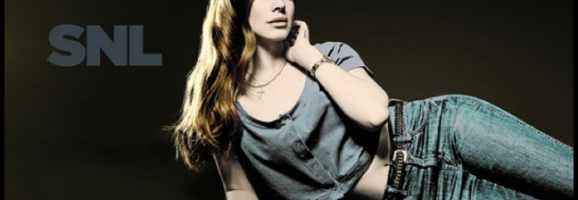
Is this the best impression of all time? No. Did it have worldwide ramifications? No. Should it be part of this list? Probably not. However, Wiig’s impression deserves an honourable mention predominantly for the motivations behind the appearance and the shots fired at a borderline cruel public.
In early 2012, Saturday Night Live aired a program with musical guest, Lana Del Rey. Mere moments after the poor starlet’s performance had ended, the vultures swooped. Critics and general audience alike were calling her stilted, off-key and off-putting. Websites jumped on the bandwagon, calling her the worst guest in SNL‘s history, bar none. It seemed as if her performance was the third most offensive event in human history, below genocide and war but above whaling and Two and a Half Men. In short, the answer to every horrible thing that happened that week was Lana Del Rey. Why is it raining? Lana Del Rey. Why is there suffering in the world? Lana Del Rey. Who let the dogs out? Lana Del Rey. I’ve seen the performance. It wasn’t very good. However, this isn’t about the backlash, or even the singer herself. This is about what happened the week after.

The very next episode of SNL had a bewigged Wiig (had to say it) strutting awkwardly into news satire segment Weekend Update in full Del Rey regalia, stating that her intention was to apologise for her travesty of a musical performance the preceding week. What followed was a scathing review of the ridiculous remarks made by critics and the public regarding Del Rey’s work, leaving no stone unturned. So Del Rey changed her name and is therefore a fake? Absolutely. Nobody famous would every change their name (except for Sting, Bob Dylan, Gaga, and a host of others). She doesn’t deserve to be on the SNL stage? No, I guess she really isn’t up there with such amazing guests as the Baha Men. Every comment the critics made was turned in their faces, all the while poking fun at Del Rey’s awkward traits so as to present a somewhat balanced portrayal. This is why I love impression: Del Rey wouldn’t or couldn’t be there herself, so instead Wiig stood up and kicked some critic butt.
So, What Does it Mean?
Comedy is close to my heart, as I watch television for a sense of escapism, for laughter and joy when the drudgery of daily tasks has become monotonous and boring. I think that too many people discount comedy as something simple, something everyone can do. I mean, everyone can tell a joke, right? Well, if that is the criterion, I guess I could be a great dramatic actress; I can make someone cry. Just kick them in the shin, or leave Lego on the floor in a darkened room.
True comedy, and impressions in particular, take time, work and dedication. Even if it is a once off sketch, like Wiig as Del Rey, I can guarantee that she spent hours perfecting just how to speak and walk. Impressions are hard, and trying to make people laugh is hard. Both together? It takes giants.
What do you think? Leave a comment.

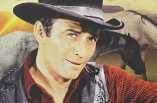




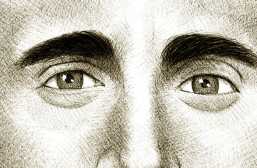

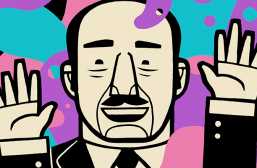


I love SNL! The Sinatra Group is my all time favorite SNL sketch. Phil Hartman’s acid tongued Ol’ Blue Eyes impersonation always killed and this was the best of his multiple appearance. Every line absolutely kills, especially his barbs at Sinead O’Connor (Jan Hooks). I’m a massive Phil Hartman fan and I definitely think this is his best sketch, with Clinton at McDonald’s being a very close second.
Another sketch that is criminally underrated and one of my all time favorites is “Bike Messenger,” where Mike Myers plays a Scottish bike messenger who has prolonged conversations with various passer-by’s despite him going by at a ridiculously fast speed and constantly commenting that he cannot stop. Norm MacDonald is also brilliant in it, playing a fourth wall breaking pedestrian who points out how illogical the sketch is. This was the high point of an otherwise abysmal show (the one where host Martin Lawrence did the feminine hygeine monologue).
‘Sexy Cakes,’ with Patrick Stewart as the erotic bakery owner that only sells cakes with pictures of women using the bathroom (it’s infinitely funnier than it sounds).
Two skits from the time Jim Carrey was on around 1999 or 2000. One where he was the lifeguard over the hotel jicuzzi and Will Farrell was in the jicuzzi. I can’t describe it, hopefully you’ve seen in.
The 1988 and 1992 presidential debate sketches are awesome!
Vanessa is my favorite this season. She’s so cute, sweet, and has a pleasant personality and she’s pretty funny. But the funniest and most talented in my opinion is Kate.
I believe that SNL is the platform that many famous actors used to jumpstart their careers. Some of these actors include Eddie Murphy , Adam Sandler, Dan Akroyd, and Chris Farley.
I thought that this article was beautifully written and that SNL is a great platform for actors to jumpstart their careers.
Neat article. Why do you think there hasn’t been a really stellar Obama impression? Is it because we don’t really know what to make of him yet? Also, any opinion on the new Weekend Update anchor?
Tina Fey made a pretty good impersonation of Palin. Unfortunately she did little else on SNL that was even remotely funny.
Tina is sooooo talented!! She was dead on with her impersonation of Sarah Palin!! And totally deserved that Emmy!!
Well…she was the main SNL writer…. meaning that everybody else was funny because of her work.
PS. Nice article.
Tina Fey should run for the office 😛
Will Ferrell really, really, hated the cheerleader skit.
I loved Will Ferrel. Particularly the global warming spoof. Its funny how the Libs think their so great. Most of this happened under President Clinton. The most Liberal parts of our country have the most minorities in jail, have the worst schools, have the most crime, have the most job loss. They even joke about this in Europe, not that im a big fan of Europe. Liberals are the most cut throat of them all. They cry about workers pay, but wine if you raise the price of something by a nickle.
Ferrell gave an interview and he said he loves bush and looks up to him that’s why he does a lot of acting as bush jobs.
I must have seen this clip 50 times and still cracks me up….!
Me too.
I thought this was a well written article and I also agree that people tend to favor dramatic over comedic impersonations. Will Ferrell transformed the persona of George W. Bush and made him into his own character.
Great article, very witty ad well-observed, and ‘If there is no believability in the impression, audiences will not respond’ is where so many impressionists go wrong IMO.
Here in Britain, we have a long history of impressionists taking the mick out of our politicians. Gordon Brown in particular was a gift to the satirists. You’re right about the lack of impressions of Obama; I’ve noticed there seem to be less outlandish characters in office these days. Obama is hard to do because he doesn’t have any particularly distinguishing vocal tics or mannerisms.
I just have to say I guess there is something of a ‘dearth’ of Obama impersonators, but perhaps I haven’t really noticed it? They’ve all got something special, including the dude the Workaholics guys hired for that one party, but my personal fave, which could even be included in this list, is Key and Peele’s, complete with Luther, Obama’s anger translator. One of my favourites, as the impression is really enacted by both performers, ingeniously revealing even deeper comedic layers to Obama’s character.
Great essay and great topic. Thanks, Kathryn! One thing that these “impressionists” share is that they really nail one or two singularly unique traits of the person they’re portraying that exemplify that celebrity so that you see that person in a new way-and it’s usually a quality they’ve always had but something you’ve never noticed until it’s been impersonated! I’m thinking of Ferrell’s facial twitches for Bush, Fey’s crazy wide-eyed stare as Palin at her most earnest, Poehler’s super-villain laugh as Hilary Clinton, and Hammond’s lewdness as Connery. It’s hard to even look at the those people the same way again. “There must always be a hint of truth,” as you aptly say.
And the impersonator has to bring something new and something of him or herself to the part. For many people during the 2008 presidential election, Tina Fey’s Sarah Palin became a force unto itself. Comedy was posing an important set of questions about the abilities and qualities of our future leaders. Thanks again for this great read!
This is a great article! I especially love that you honed in on how good impressions are rooted in truth and in not being mean-spirited. Both of those aspects are crucial to a good impression.
This is a nice time capsule in the sense that it’s going to the last point where SNL had consistently passable entertainment.